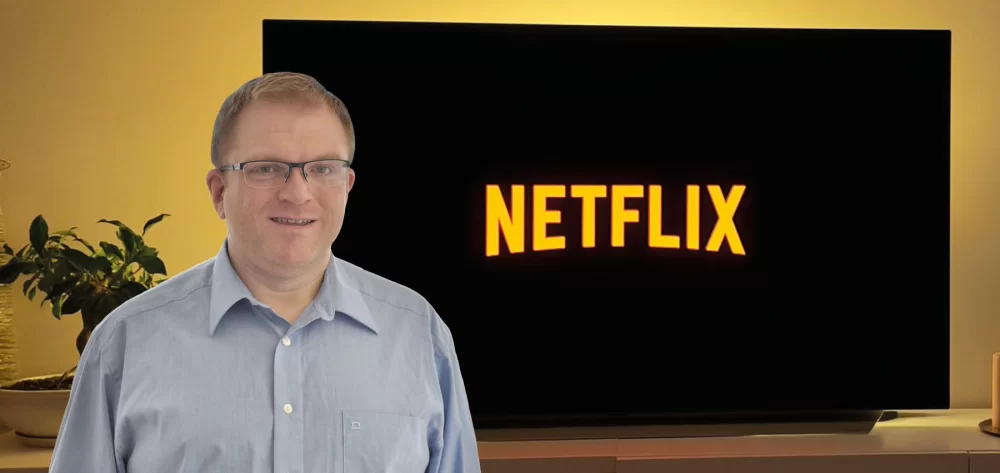Netflix now services around 220 million paid subscriptions. The streaming pioneer spent many years growing quarter over quarter. But finding new customers is becoming more difficult for Netflix. A representative survey by moneyland.ch shows that 58 percent of Switzerland’s adult population already used Netflix at the start of 2022.
Instead of using just one model for its subscriptions, Netflix is going to have to offer alternatives which appeal to new groups of consumers. The current subscription model has likely topped its growth potential.
I’ve watched similar developments in other markets for decades now. We saw, for example, a similar growth pattern in the mobile communications sector. Mobile phones remained a niche product until the end of the 1990s, but became far more commonplace after the turn of the millennium. As more people got mobile phones, telecom service providers were able to massively grow both their customer bases and their revenues with relatively little effort. By around 2005, the market had become increasingly saturated. Mobile service providers had to adapt. Their initial approach was to launch subsidiaries and secondary brands, and this was followed by the introduction of flat-fee plans and special promotions.
I expect to see the same story – or at least a very similar one – repeat itself with streaming services. The advantage for us as consumers is that we’ll have more options to choose from. Here I list new subscription models which may soon be offered to Netflix users:
1. Discounted subscriptions for free users
Netflix is already testing this model in countries like Chile, Cost Rica, and Peru. When Netflix manages to identify someone who logs in using an acquaintance’s login information, it offers them a subscription at a radically-reduced price.
From free rider to paying customer
Many people use streaming services without paying for them. For example, 14 percent of Switzerland’s residents use somebody else’s login data to access Netflix. That fact is a thorn in the eye for streaming service providers. But if Netflix manages to convert all of those piggy-backers into paying customers, it will once again be able to grow its revenues. The question is: How many of the people who use Netflix for free would even consider paying for a plan.
2. Budget subscriptions
Budget versions of products are widely offered in supermarkets – with M-Budget from Migros and Prix Garantie from Coop being two prominent examples. Budget products are also found among mobile plans and other product types. I would not be at all surprised if Netflix offered a budget subscription.
While it is true that Netflix already has three different plans, all three of these subscriptions have exactly the same content – including all of the newest series episodes and movies. A budget plan would be different. Subscribers would pay less, and receive a limited selection of video content. One option would be a budget subscription which does not include the latest movies and episodes. Image quality would also be on the lower end, considering that the cheapest Netflix plan currently offered only has SD resolution.
3. Day passes
A day pass could be a good option for people who only occasionally watch Netflix videos. The user buys a day pass which lets them watch as many movies and series on Netflix as they want to. The advantage is that viewers who just want to watch a few videos don’t have to take the step of subscribing to a plan. The disadvantage: If you find a series you like and don’t manage to watch all the episodes in one day, you would have to get another day pass or sign up for a subscription before you can keep watching the show. If you were to use more than a certain amount of day passes, it would end up costing more than a monthly subscription.
4. Free streaming with advertisements
Introducing an advertisement-funded will be difficult for Netflix. There is a risk that subscribers who only occasionally use Netflix would terminate their subscriptions and simply use the free version. I expect that a free Netflix subscription funded by advertising would not include the newest series episodes and movies. The reason is that Netflix will want to encourage users to get paid subscriptions rather than watching videos with commercials for free.
5. Secondary brands
Secondary brands are already a widely-used strategy for marketing mobile plans, as well as groceries. When a market has become saturated, many companies launch secondary brands in order to reach new groups of consumers which would not buy products offered by the primary brand. That a streaming service like Netflix would launch a secondary brand is somewhat unlikely, in my opinion. Netflix has a strong focus on exclusive video content. These movies and series are strongly linked to the Netflix brand. Netflix is unlikely to make its prized content available on platforms which, from a consumer perspective, have no connection to it.
6. Video and series rentals
The success of Netflix and other streaming services has resulted in video rentals largely becoming a thing of the past. But paradoxically, video rentals may experience a renaissance. Rental streaming models let customers pay to get access to a specific movie or series for a certain amount of time (24 hours, for example). At the right price, many consumers would likely prefer renting movies or series once over getting unlimited access through an ongoing subscription.
7. Movie and series purchases
Models which let people buy specific movies or series outright have a lot of potential for Netflix. In this kind of model, customers pay for the specific movie or series of their choice from the Netflix lineup just once, and get unlimited access to that video. The advantages are that customers do not have to get a subscription, and they can take all the time they want to for watching a series.
8. Vouchers for consumer products
Collaborations with third-party companies are common for mobile plans and credit cards, among others. In Switzerland, for example, major retailers Coop and Migros offer their own branded mobile plans and credit cards in collaboration with Swiss telecom service providers and card issuers. Netflix would likely collaborate with an international corporation. Possibilities could include codes printed on Coca Cola bottles or branded yoghurt cups which consumers could use to watch a specific series or use Netflix for a certain amount of time free of charge.
Which models will most likely be used?
It is pretty clear that Netflix would not use all of the models I listed. This post contains sketches of ideas which I believe Netflix or other streaming services may adopt as alternatives to subscriptions.
Of course, Netflix's ability to continue producing movies and series which strike a chord with viewers is the most important factor. The “content is king” motto dominates the streaming world.
But assuming that Netflix will be able to continue offering attractive content going forward, the company still faces a major challenge. Because traditional subscriptions are still the most lucrative model, Netflix has to find ways to appeal to new groups of consumers without cannibalizing itself by losing valuable paying subscribers to possible less lucrative offers.
What do you think about Netflix? Do you think monthly subscriptions are the way to go, or would you be more attracted to alternative models? Share your opinion in the forum.
More on this topic:
Compare Swiss video streaming offers now
Use the interactive Swiss TV plan comparison now






